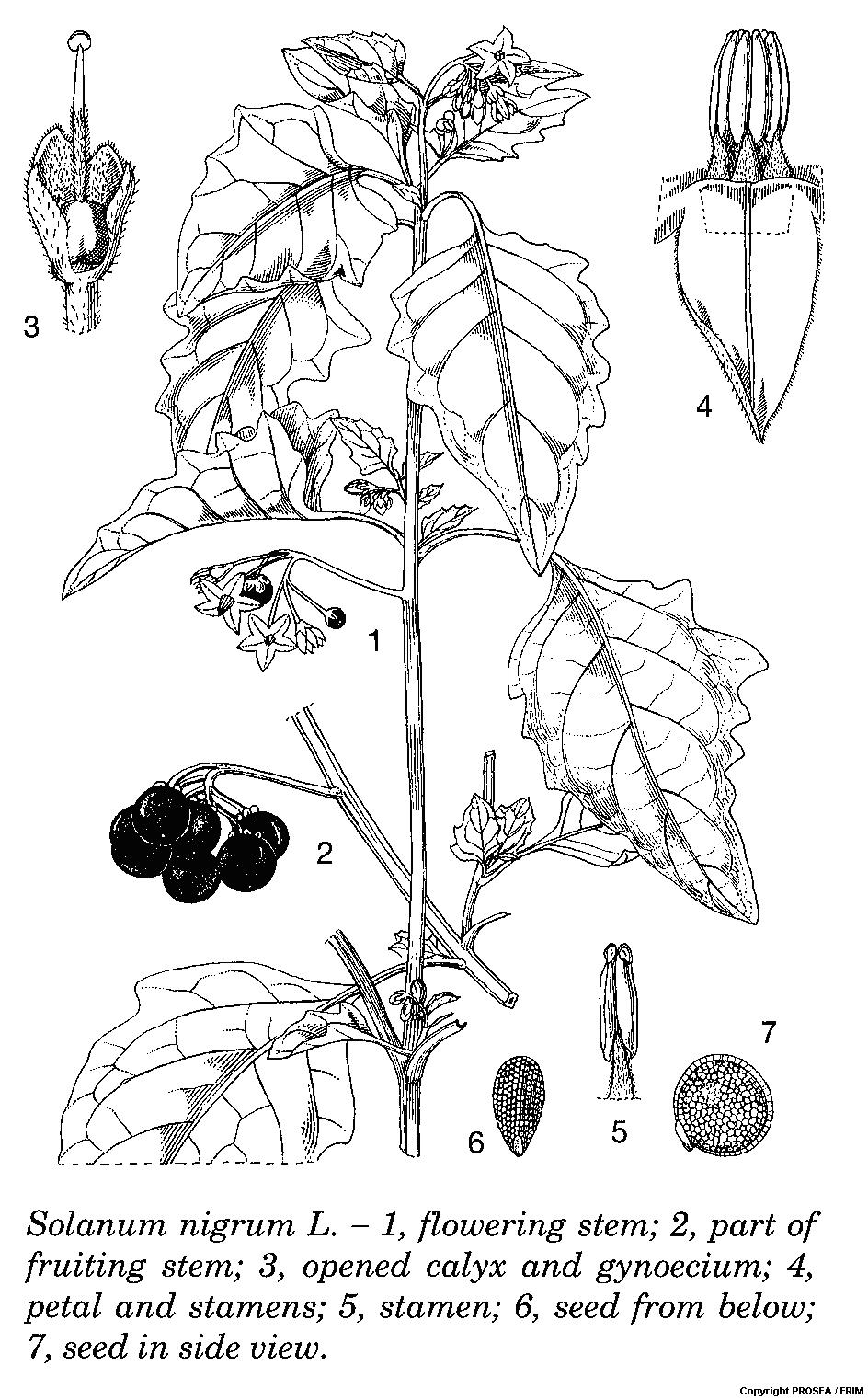Solanum nigrum L.
Family
Solanaceae
Synonyms
Solanum schultesii Opiz.
Vernacular Names
|
Malaysia |
Ranti, terong meranti, terong parachichit (Peninsular). |
|
English |
Black nightshade, common nightshade, garden nightshade. |
|
Indonesia |
Ranti (Javanese), leunca (Sundanese), bobose (Ternate). |
|
Papua New Guinea |
Takuta (Wapenamanda, West Sepik). |
|
Philippines |
Konti (Filipino), anti (Bontok, Tagalog), kuti (Bikol). |
|
Thailand |
Ma waeng nok (Southern), ya tom tok (Northern), kha om (Prachuap Khiri Khan). |
|
Vietnam |
C[af] n[us]t [as]o, gia c[aaf]u, lu lu d[uwj]c. |
|
French |
Herbe à calalou, morelle noire. |
Geographical Distributions
Solanum nigrum is native to Europe and western Asia, introduced in North America, Africa, Asia and Australia; probably fairly widely distributed throughout the Malesian region.
Description
Solanum nigrum is an annual or perennial, unarmed herb, up to 1 m tall and with glandular hairs.
The leaves are ovate, measuring 4-10 cm x 2-7 cm, simple, with entire to bluntly toothed margin, wedge-shaped base and obtuse at apex.
The inflorescence is an extra-axillary and short raceme with (3-)4-8(-12) flowers. The sepal is bell-shaped lobes are up to 1 mm long while the petal is star-shaped, measures 8-10 mm in diametre, white or rarely tinged with purple. The anthers are oblong, measure 2-3.5 mm long, with a smooth ovary, with style 5-6 mm long and capitate stigma.
The fruit is globular to ellipsoid, measures 6-8(-10) mm in diametre, 2-locular, dull or somewhat shiny black or purplish-black. The calyx is not enlarged and with appressed or scarcely reflexed lobes.
There are (15-)25-35(-45) seeds per fruit and measure 1.8-2.2 mm long.
Ecology / Cultivation
Solanum nigrum is common in open and disturbed places, in full sunshine or slight shade, also in light forests, up to 3100 m altitude.
Line Drawing / Photograph
References
1. Plant Resources of South-East Asia No.12(1): Medicinal and poisonous plants 1.


